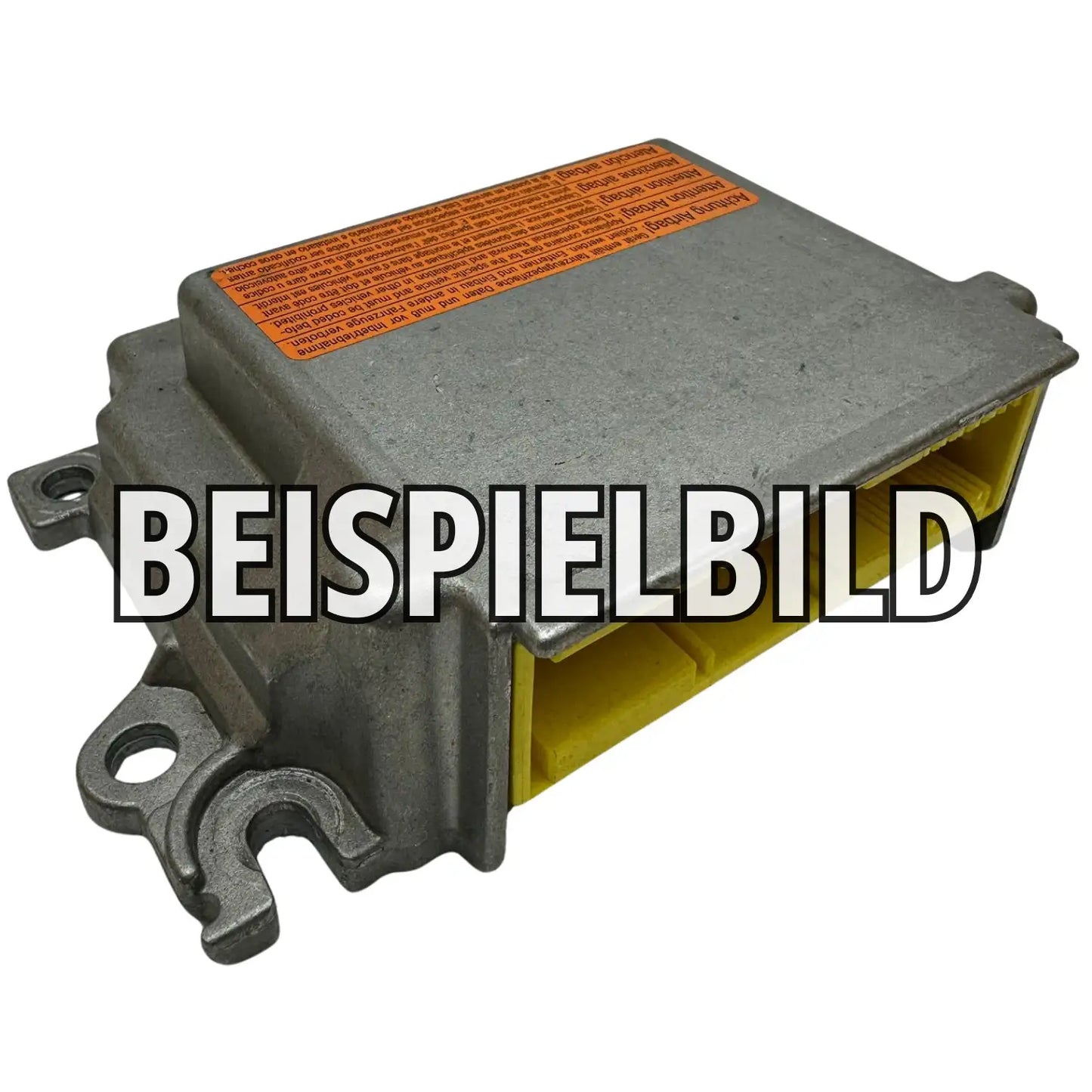Daihatsu Tanto L350 airbag control unit repair
So funktioniert die Reparatur Ihres Airbag-Steuergerätes bei uns

What is a Daihatsu Tanto L350 airbag control unit?
The Daihatsu Tanto L350 airbag control unit is the central electronic module that controls your vehicle's entire occupant restraint system (SRS). It continuously monitors sensors and seatbelt pretensioners to deploy the airbags instantly in an emergency and ensure occupant safety. A professional Daihatsu Tanto L350 airbag control unit repair is therefore crucial.
This critical component is crucial for the passive safety of the Daihatsu Tanto L350 and ensures that airbags and seatbelt pretensioners function correctly in the event of a collision. The control unit is specifically designed for the Daihatsu Tanto L350 series, which was typically produced between 2003 and 2007.
It communicates continuously with other vehicle systems and stores relevant data for diagnostics. The robust housing protects the 12V electronics from external influences and ensures electromagnetic compatibility (EMC).
Why is the Daihatsu Tanto L350 airbag control unit defective?
A Daihatsu Tanto L350 airbag control unit often fails when it stores irreversible crash data after an accident, which blocks the system and permanently activates the airbag warning light. Internal electronic malfunctions or power surges can also cause a failure requiring immediate repair.
Because the airbag control unit contains sensitive electronics, aging, corrosion, or manufacturing defects can lead to internal failures. In this case, the system no longer functions, and the safety of the occupants is no longer guaranteed.
After a crash, the module permanently stores the impact data, making it impossible to operate without a professional Daihatsu Tanto L350 airbag control unit repair. The control unit must be reset or replaced to restore full functionality.
Regular internal self-tests and permanent error monitoring are integrated to ensure functionality; in the event of a failure, the airbag warning light is activated.
Common error codes for Daihatsu Tanto L350 airbag control unit repair
When diagnosing and repairing the Daihatsu Tanto L350 airbag control unit, specific error codes often occur that directly indicate problems with the control unit itself. These codes are crucial for precisely locating the defect and determining the necessary repair measures.
- B1000 → Control unit communication error → The airbag control unit cannot communicate correctly with the diagnostic tool or other vehicle modules, resulting in malfunctions.
- B1342 → Crash data stored in the control unit (not erasable) → After an accident, impact data is stored in the control unit, which requires a mandatory reset of the module or replacement to reactivate the system.
What part numbers are available for the Daihatsu Tanto L350 airbag control unit repair?
For a successful Daihatsu Tanto L350 airbag control unit repair, it is essential to know the correct OEM part numbers that exactly match your vehicle model. The correct identification numbers ensure compatibility and the restoration of original safety functions after service.
The original OEM part number of the airbag control unit for the Daihatsu Tanto L350 is 89170-B2830 , directly from the vehicle manufacturer Daihatsu. This number is often found on the module's housing and confirms its authenticity.
Additionally, there is the supplier part number 0 285 013 561 from the manufacturer Bosch, which produces many electronic components for vehicles. Both numbers identify the same compatible airbag module and are relevant for Daihatsu Tanto L350 airbag control unit repair.
Installation position and operation of the Daihatsu Tanto L350 airbag control unit
The airbag control unit is usually installed in the protected area of the center or underbody of your Daihatsu Tanto L350, often near the glove compartment or under a front seat. It is securely attached to the body with screws to minimize vibration.
The control unit evaluates signals from acceleration sensors, detects accident situations, and initiates the deployment of airbags and seatbelt pretensioners. Repairing the module, especially deleting crash data, represents a cost-effective alternative to purchasing a new one.
- Choosing a selection results in a full page refresh.
- Opens in a new window.


